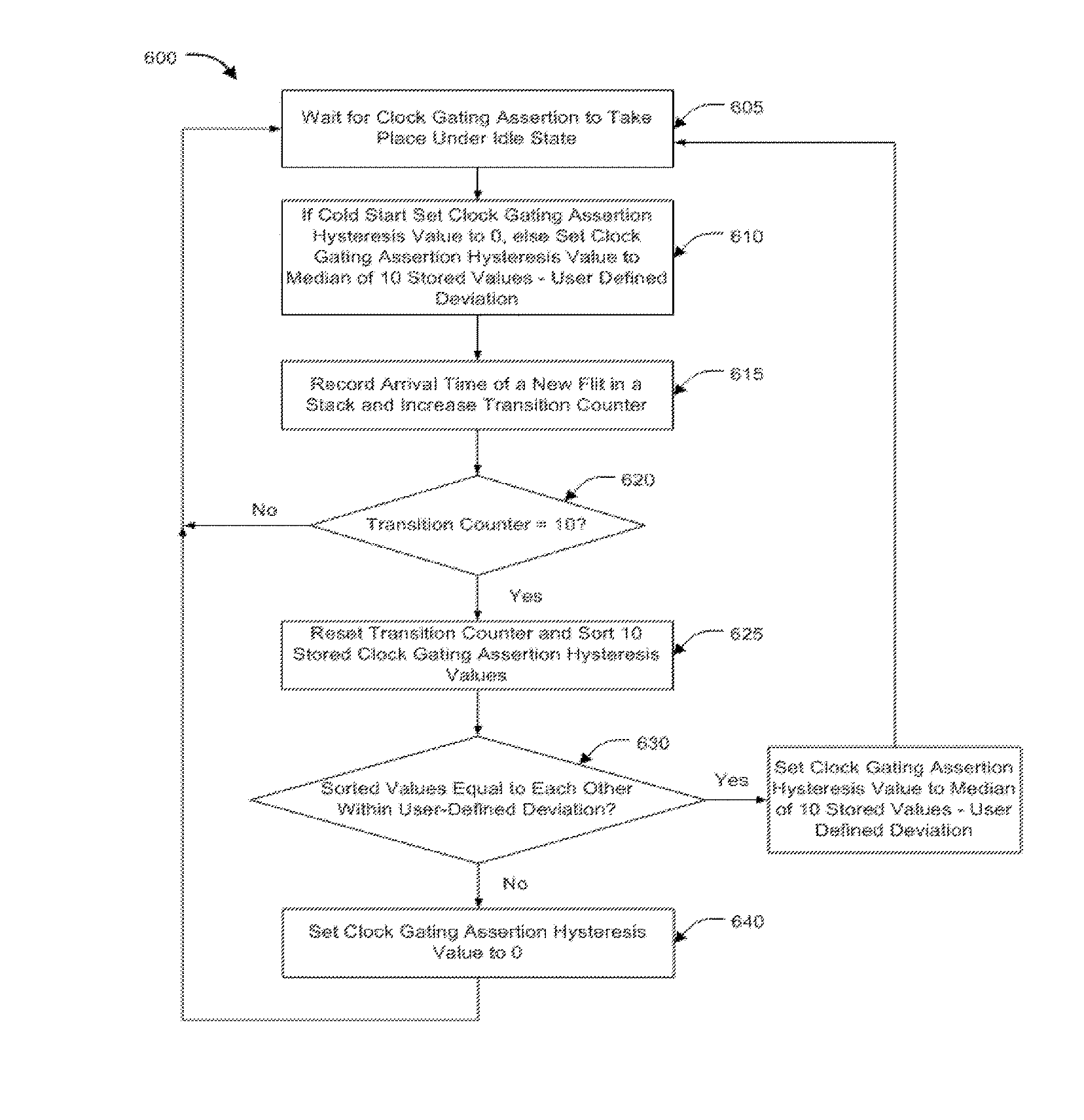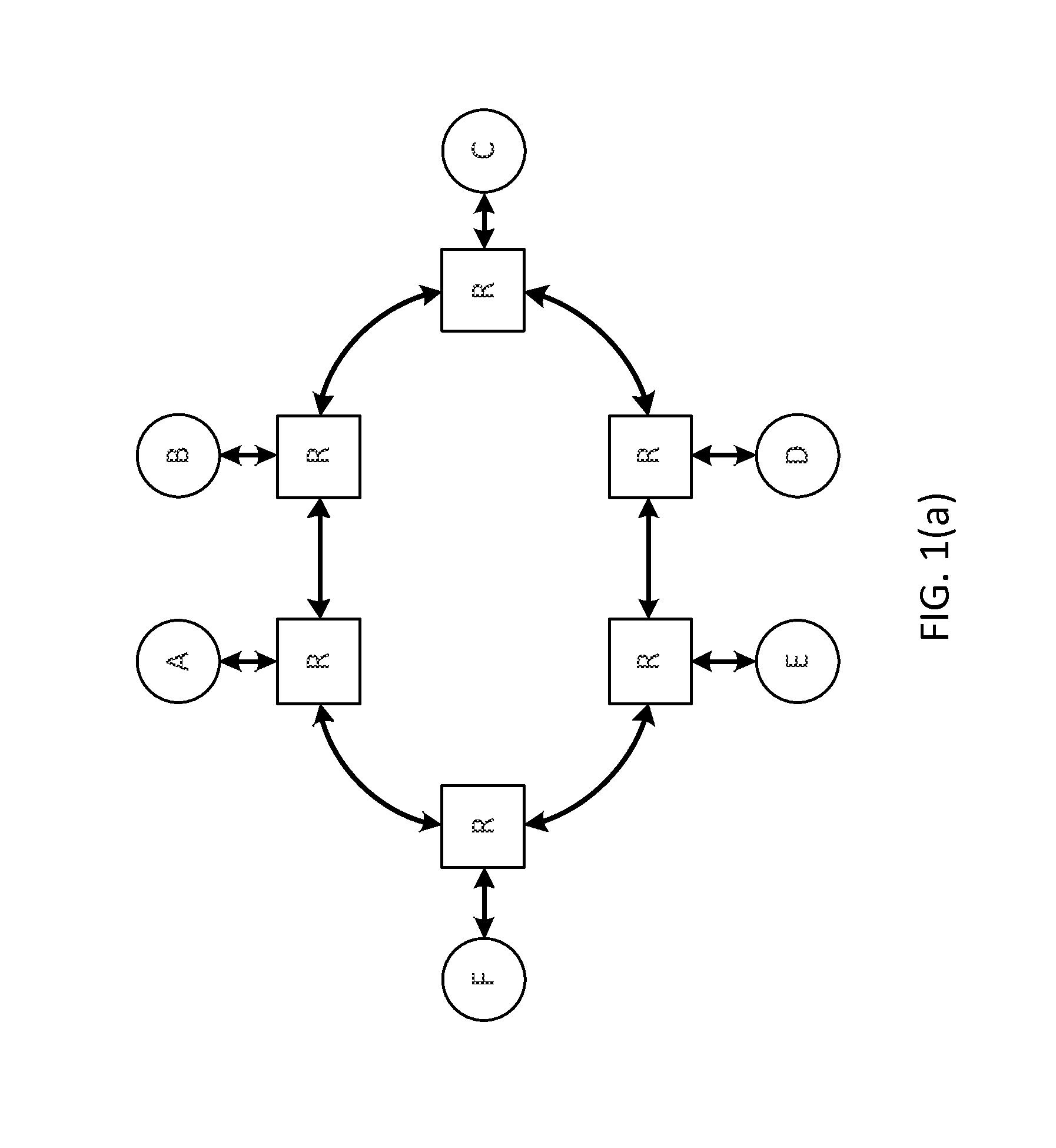Clock gating for system-on-chip elements
a technology of hardware elements and clock gating, which is applied in the field of interconnect architecture, can solve the problems of complex routing form, inability to analyze and implement routing, and the inability to meet the requirements of dimension order routing, so as to reduce latency penalty, save power, and reduce latency penalty
- Summary
- Abstract
- Description
- Claims
- Application Information
AI Technical Summary
Benefits of technology
Problems solved by technology
Method used
Image
Examples
Embodiment Construction
[0036]Although example implementations are described herein with respect to a NoC, the same implementations can be implemented in a SoC or in a system incorporating both a SoC and a NoC.
[0037]The following detailed description provides further details of the figures and example implementations of the present application. Reference numerals and descriptions of redundant elements between figures are omitted for clarity. Terms used throughout the description are provided as examples and are not intended to be limiting. For example, the use of the term “automatic” may involve fully automatic or semi-automatic implementations involving user or administrator control over certain aspects of the implementation, depending on the desired implementation of one of ordinary skill in the art practicing implementations of the present application.
[0038]Example implementations involve clocked floating point operations (FLOPS) within the NoC. When there is no data on the activity side for a long time...
PUM
 Login to View More
Login to View More Abstract
Description
Claims
Application Information
 Login to View More
Login to View More - R&D
- Intellectual Property
- Life Sciences
- Materials
- Tech Scout
- Unparalleled Data Quality
- Higher Quality Content
- 60% Fewer Hallucinations
Browse by: Latest US Patents, China's latest patents, Technical Efficacy Thesaurus, Application Domain, Technology Topic, Popular Technical Reports.
© 2025 PatSnap. All rights reserved.Legal|Privacy policy|Modern Slavery Act Transparency Statement|Sitemap|About US| Contact US: help@patsnap.com



